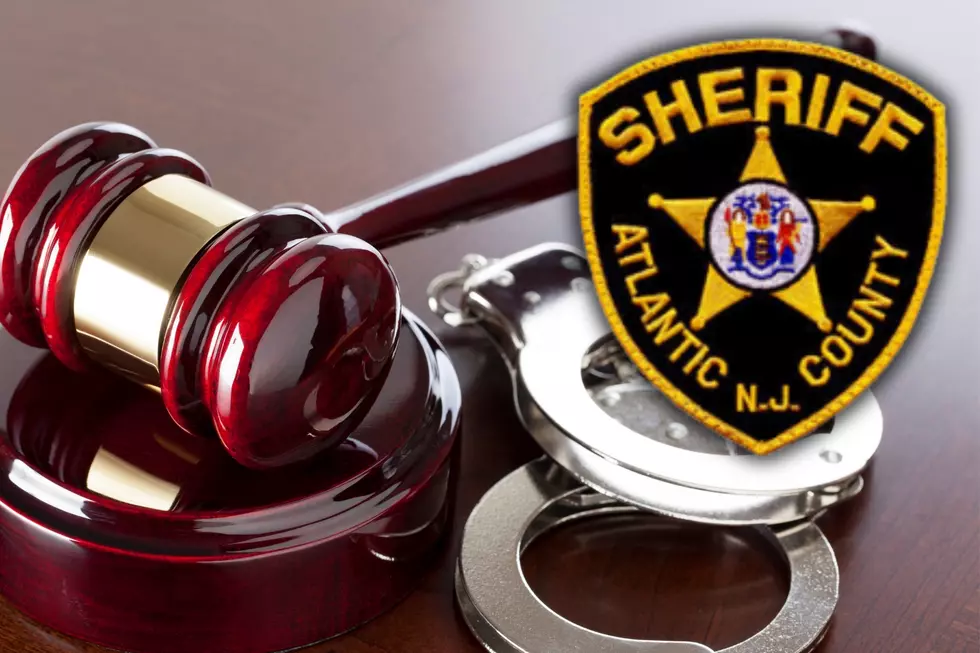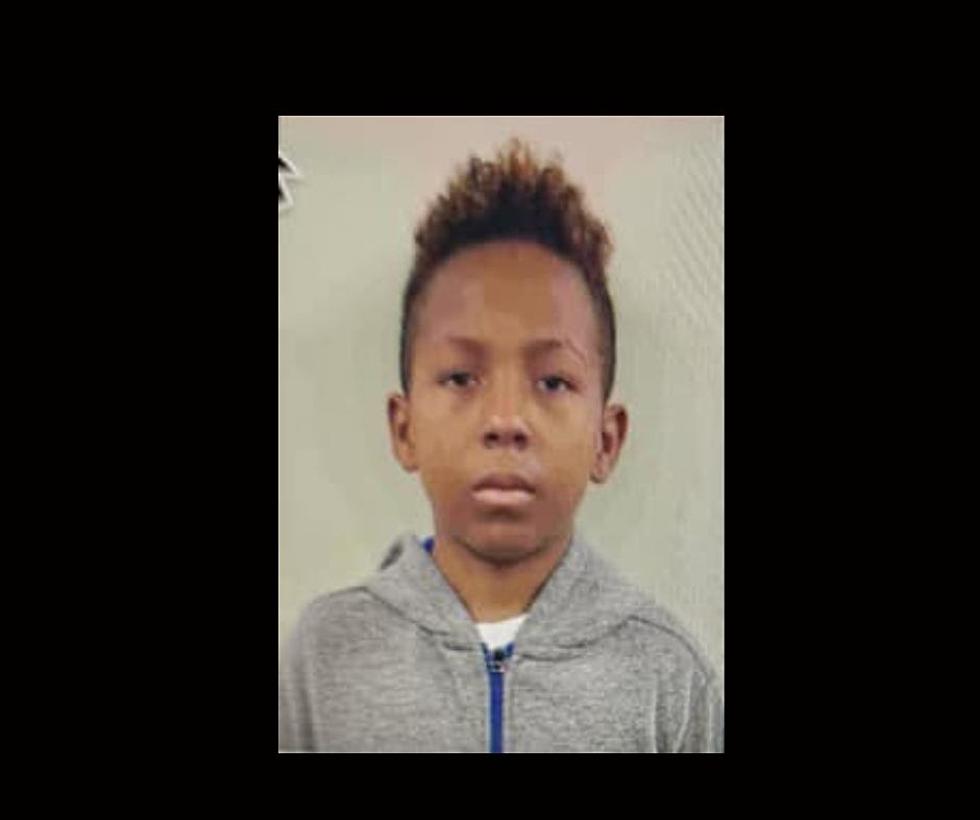
No Charges Against Officers in Shooting of Armed Man In Atlantic City
An Atlantic County Grand Jury has declined to file charges against police officers involved in the shooting of an armed man near The Walk in Atlantic City last year.
According to Atlantic County Prosecutor Jim McClain, the grand jury reviewed evidence in the March 2014 case yesterday, and declined to bring criminal charges.
On March 27, 2014 at 12:31 p.m., Pleasantville Police responded to two 9-1-1 calls, reporting that there was a man with a gun at the La Escondida II Restaurant, 701 Black
Horse Pike. The man, later identified as Antoquan T. Watson, 27, of Williamstown, NJ, fled Pleasantville police in a vehicle east on Route 322 through Pleasantville, Egg Harbor Township, Ventnor City, back into Egg Harbor Township, and finally into Atlantic City.
The pursuit ended at Missouri and Atlantic Avenues in Atlantic City, where Watsonexited his vehicle with a handgun.Gunfire was exchanged between the suspect and police at that location, and the suspect was killed. Police units from Pleasantville, Egg Harbor Township, and Atlantic
City had been involved in the pursuit.The Atlantic County Prosecutor’s Office investigated the incident, as mandated by New Jersey Attorney General Directive.
What follows is a statement from Prosecutor McClain:
Today, June 23, 2015, the Atlantic County Grand Jury heard evidence regarding the circumstances surrounding the fatal shooting of a 27 year-old Williamstown man by officers of the Atlantic City and Pleasantville Police Departments on Thursday, March 27, 2014. Following the presentation of evidence by First Assistant Prosecutor Diane M. Ruberton of the Atlantic County Prosecutor’s Office, the Grand Jury determined that the officers acted lawfully and declined to institute criminal charges against the officers.
The following statement sets out the evidence gathered during the year-long investigation of this incident and is being released in order to properly inform the public on this very important issue of common concern.
On March 27, 2014, between 11:30 am and noon, Antoquan T. Watson entered the La Escondida II Restaurant and Bar at 701 West Black Horse Pike in Pleasantville. Mr. Watson went to the bar area of the establishment and ordered and consumed two beers. He had been to this establishment on prior occasions and was recognized by employees of the restaurant. Mr. Watson then attempted to pay for his beers with a credit card, which was refused by the issuer. Mr. Watson then presented a second credit card, which was also refused. Ultimately, he paid for his drinks in cash.
A waitress who had contact with Mr. Watson while he was at the bar stated that he appeared to be under the influence of alcohol and that he stated that he was rich.
During the time that Mr. Watson was at the bar, there were at least 18-20 other patrons inside the establishment. One of these patrons observed that Mr. Watson had a handgun on his person while he was at the counter paying his bill. A number of other patrons observed that, as Mr. Watson left the bar area on his way out of the establishment, he had a handgun in his right hand. At this time, Mr. Watson did not point the handgun at anyone, nor did he verbally threaten to use it against anyone. Witnesses report that he had the gun pointed upward toward the ceiling. These observations are confirmed by video captured inside the restaurant.
In addition to making these visual observations, witnesses inside the restaurant state that Mr. Watson was muttering to himself while walking out of the restaurant, making such statements as, “I got this. I got this.”, and “This is bull_ _ _ _.”
Once Mr. Watson was outside the restaurant, witnesses called the Pleasantville Police Department, reported their location and reported that they had seen a person in possession of a gun. Dispatch records from the Pleasantville Police Department establish that the call from witnesses came in to the department at 12:31 pm and that the first police unit arrived at the restaurant at 12:38 pm.The first Pleasantville Police Officer at the scene approached a black SUV in the restaurant’s parking lot. This vehicle, a black Saturn Vue, was registered to Antoquan Watson. The Pleasantville officer approached this vehicle while holding a department-issued shotgun. Mr. Watson, who was seated in the driver’s seat of this vehicle, ignored the officer’s directions to roll down the window and exit the car. Instead, Mr. Watson put the car in gear and pulled out of the parking lot on to the eastbound portion of the Black Horse Pike. No shots were fired at this time, by either Mr. Watson or the Pleasantville officer.
The Pleasantville officer then got into his marked police vehicle, reported the events which had just occurred on the radio, and began to pursue the vehicle driven by Mr. Watson. Other police vehicles from the Pleasantville Police Department joined in this pursuit.
Mr. Watson drove his vehicle eastbound on the Black Horse Pike through Pleasantville and the West Atlantic City section of Egg Harbor Township into Atlantic City, reaching speeds between 50 and 85 miles per hour and running numerous red lights during the pursuit.
Mr. Watson eventually made a right hand turn off the Black Horse Pike on to West End Avenue in Atlantic City. He then led police on a chase into the Ventnor Heights section of Ventnor City. He eventually turned his vehicle back on West End Avenue and proceeded back toward the Black Horse Pike.
A marked Atlantic City police vehicle containing two Atlantic City Police Officers was stationary, blocking traffic at the intersection of West End Avenue and the Black Horse Pike. Mr. Watson then forced his vehicle through that intersection by ramming two civilian vehicles. As he turned right on to Albany Avenue, he fired at least one round from the handgun in his possession at these officers. This was observed by the Atlantic City officers in that vehicle, another Atlantic City officer, and two civilian witnesses whose vehicles were stopped at the intersection.
The fact that a round was fired is also confirmed by the fact that a “Shot-Spotter” sensor picked up the acoustic signature of a gunshot at that time and place. The “Shot-Spotter” system is a series of audio sensors placed around Atlantic City which identify and catalogue the acoustic signature of gunshots.
This system has been installed and used in a number of cities throughout the country during the last few years. While it is deemed necessary for three such sensors to pick up a sound, identify it as a gunshot and triangulate the sound to a specific location in order to conclusively identify a gunshot and its time and location, the information as picked up by this single sensor does support the testimony of the police officers and the civilian witness. The “Shot-Spotter” sensor catalogued the time of the gunshot as 12:46 p.m.
No police officer returned fire at that time.
After firing the round at the police officers, Mr. Watson proceeded over the Albany Avenue Bridge into Atlantic City. Mr. Watson then made an illegal left turn on to Atlantic Avenue and proceeded north on Atlantic Avenue through the casino district, toward the inlet section of Atlantic City. Police officers from Pleasantville and Atlantic City continued their pursuit. A Pleasantville Police Department vehicle equipped with a dashboard video camera was the lead police vehicle in the pursuit.
As Mr. Watson proceeded down Atlantic Avenue, he ran multiple red lights. As he passed the Public Safety Building he was observed brandishing his handgun out the driver’s side window of the vehicle, toward police officers who were standing on the sidewalk.
As the vehicle driven by Mr. Watson proceeded north on Atlantic Avenue through the intersection at Missouri Avenue, it collided with a civilian vehicle that was proceeding through the intersection. Mr. Watson’s vehicle skidded through the intersection, struck another civilian automobile, and came to rest across the double center line, half in the southbound and half in the northbound lanes of Atlantic Avenue, in a shopping and casino area known as “The Walk”. The pursuing police vehicles stopped a short distance away from Mr. Watson’s vehicle.
The entire vehicular pursuit lasted 11 minutes and covered 10.3 miles.
Mr. Watson then exited his stopped vehicle. As he did so, he held a handgun in his right hand. As he was approached by one of the Pleasantville officers, who was giving him verbal commands to surrender, Mr. Watson raised his right hand and began firing the weapon in the direction of the officers. This action was captured by the dashboard video camera in the lead pursuit vehicle from the Pleasantville Police Department. It also was observed by nearby civilian witnesses. One civilian witness stated that he heard the officer give Mr. Watson a verbal command to surrender.
Upon observing Mr. Watson raise his handgun, the officers retreated behind their vehicles. Mr. Watson walked diagonally across Atlantic Avenue while continuing to fire the handgun.
A total of seven officers, three from Pleasantville, four from Atlantic City, fired their weapons at Mr. Watson. One Pleasantville officer fired four rounds from a shotgun as well as his department-issued handgun. The other six officers fired only their department-issued handguns. During interviews conducted in the course of the investigation, a number of these officers stated that they feared Mr. Watson was wearing body armor, due to the fact that he appeared to have sustained a number of gunshot wounds, but was able to remain standing.
The video establishes that officers continued to fire at Mr. Watson until each officer perceived that he was no longer a threat. An Atlantic City police officer who had not fired his weapon approached Mr. Watson, removed the handgun from where it rested on his abdomen and placed it on the nearby curb.
Emergency medical personnel were dispatched to the scene at 12:48 p.m. They arrived at the scene at 12:49 p.m. Mr. Watson was pronounced dead at 2:20 pm.
“Shot-Spotter” sensors establish that the first shot was fired at this scene at 12:47.08.6, and the final shot was fired at 12:47.31.6—a span of 23 seconds. The information gathered from the “Shot-Spotter” sensors indicate that a minimum of 69 and a maximum of 74 shots were fired during the course of this incident.
An autopsy of the body of Mr. Watson was conducted on March 28 and March 29, 2014. The autopsy revealed that he sustained a total of 45 gunshot wounds. The Medical Examiner concluded that the fatal wound was a gunshot to the top of the head that was received after Mr. Watson had fallen to the ground. The condition of the recovered slugs made it impossible to determine which police officer fired the fatal shot. The autopsy also revealed the existence of PCP in Mr. Watson’s system.
The handgun recovered from Mr. Watson was submitted to the ballistics laboratory of the New Jersey State Police for analysis. The State Police reported that the handgun was an operable Colt 45 semi-automatic. The gun apparently was struck twice during the exchange of gunfire between Mr. Watson and police. The gun contained an extended 10-round magazine. At the time of its recovery, the magazine was empty and there was a defective round in the chamber of the gun, which indicated that Mr. Watson attempted to fire the final round, but it failed to go off.
No police officers or civilians were physically injured during the pursuit or during the exchange of gunfire.
A nationally renowned expert on police use of force reviewed the evidence gathered during the course of the investigation, inspected the scene, and inspected all physical evidence. This expert concluded that the use of force by police officers under these circumstances was lawful, and consistent with all applicable law enforcement guidelines and standard police training.
More From Cat Country 107.3









